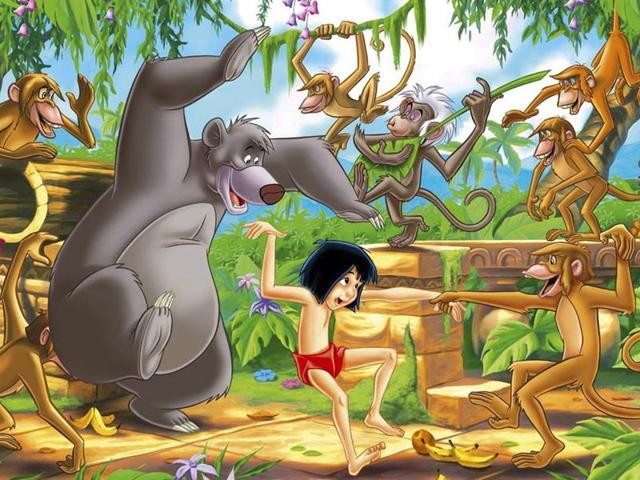From the Rig Veda to Ruskin Bond: the history of nature writing in India
Mussoorie-based writer Stephen Alter talks about the rich history of nature writing in India (dating as far back as the Rig Vedas) and the urgent need to preserve our wildlife
In one of Kalidas’s most famous poems, Meghaduta (cloud messenger), a subject of King Kubera (the god of wealth in Hindu mythology) is exiled to central India. He convinces a passing cloud to take a message to his wife in the Himalayas. “Kalidas describes how the cloud travels over the country. As he writes about it, he describes the forests,” says nature writer Stephen Alter (59), who has written more than 15 books, including The Secret Sanctuary (2015) and Elephas Maximus: A Portrait of the Indian Elephant (2004). Alter says that many metaphors and imagery in early languages like Sanskrit and Brahmi were drawn from nature. “The Rig Veda has a number of hymns related to nature. One of the most beautiful ones is to goddess Aranyani, the spirit of the forest.”

Much of Alter’s work revolves around nature and wildlife. Alter says, “I was fortunate to have grown up in Mussoorie. There were forests all around me and, of course, the Himalaya on all sides. That inspired me. It’s where my imagination caught fire.” So, it was only natural, when he started writing, that his topics were related to nature. For instance, his novel, Amritsar to Lahore: A Journey Across the India-Pakistan Border (2000), a travelogue about crossing the border between the two countries, focuses a great deal on the details of birds and trees found on both sides.

India’s natural beauty has inspired renowned writers such as Jim Corbett and Rudyard Kipling, who lived extensively in India and wrote tales related to the country’s jungles and animals. They are hailed as legends today, but their work was well-received even at the time of publication. Alter says, “Though Kipling’s Jungle Book (1894) has been much more popular since Disney picked it up, it certainly was well-read back then too. Jim Corbett’s Man-Eaters of Kumaon (1944) went on to sell four million copies worldwide.”
But writers that interest Alter the most are those whose work incorporates a message of environmental conservation. Ruskin Bond, who is often a child’s first introduction to nature writing, has often touched upon conservation with books such as The Cherry Tree (1980) and The Blue Umbrella (1974). “That’s important, as kids are extremely receptive to stories about wildlife and nature.”
Proceed with Caution
In his foreword of When the Tiger was King (2010), a collection of short stories on tigers, edited by Ruskin Bond, he suggests that 20 years from now, a child might not recognise goddess Durga’s steed instantly. One might even express surprise that there were tigers in India once. Surely, this statement from one of our finest nature writers is alarming.
In the past few years, India witnessed plenty of campaigns to save our tigers, highlighting the fact that there were only 1,411 left. Though the campaign picked up significant popularity, Alter is not sure if it was enough. “No doubt the campaigns are well-intentioned, but there’s more to be done alongside. As a community or a nation, I don’t know whether the commitment is there,” Alter says. “There are plenty of laws in place to protect wildlife, but it’s their enforcement which is crucial. Also, the government needs to involve communities living in and around the forests, and give funds to researchers and conservationists, who will know how to protect [the forests].”

Additionally, today, there is more global focus on climate change. With pollution levels reaching dangerously high levels in metro cities, Alter endorses the odd-even rule that was enforced in Delhi recently. “Years ago, when there were CNG auto rickshaws and buses in Delhi, it made an enormous difference. I lived there at the time. Unfortunately, that didn’t last as many of us had hoped it would,” he says. He is all for whatever measures we can take to curb our demand for fossil fuels, and feels that it’d bode well for all cities that have issues with traffic and pollution.
5 Must-Read Nature Writings
* The King and I by Prerna Singh Bindra: A lively and perceptive personal memoir of encounters with tigers and other wildlife in different parts of India.
* On Jim Corbett’s Trail by AJT Johnsingh: A respected conservationist tells entertaining stories of his quest to follow in Corbett’s footsteps, while tracking unusual animals like the dhole or wild dog.
* The Way of the Tiger by K Ullas Karanth: An eloquent and persuasive argument for the preservation of tigers, from one of the foremost wildlife biologists in India.
* My Husband and Other Animals by Janaki Lenin: A wonderful series of short, anecdotal accounts of natural history, full of humour and understanding.
* Butterflies on the Roof of the World by Peter Smetacek: A fascinating saga of a family’s obsession with butterflies and one man’s dedication to entomology, which reads as smoothly as a novel.
— By Stephen Alter
Don’t Miss
What: Natures Narrative: Writing Outdoors in India, a talk by Stephen Alter, will take place on February 12, 5pm onward.
Where: Auditorium, Godrej ONE, Vikhroli (E) (Entry from Eastern Express Highway)
RSVP: indiaculturelab@godrejinds.com
Visit: indiaculturelab.org





